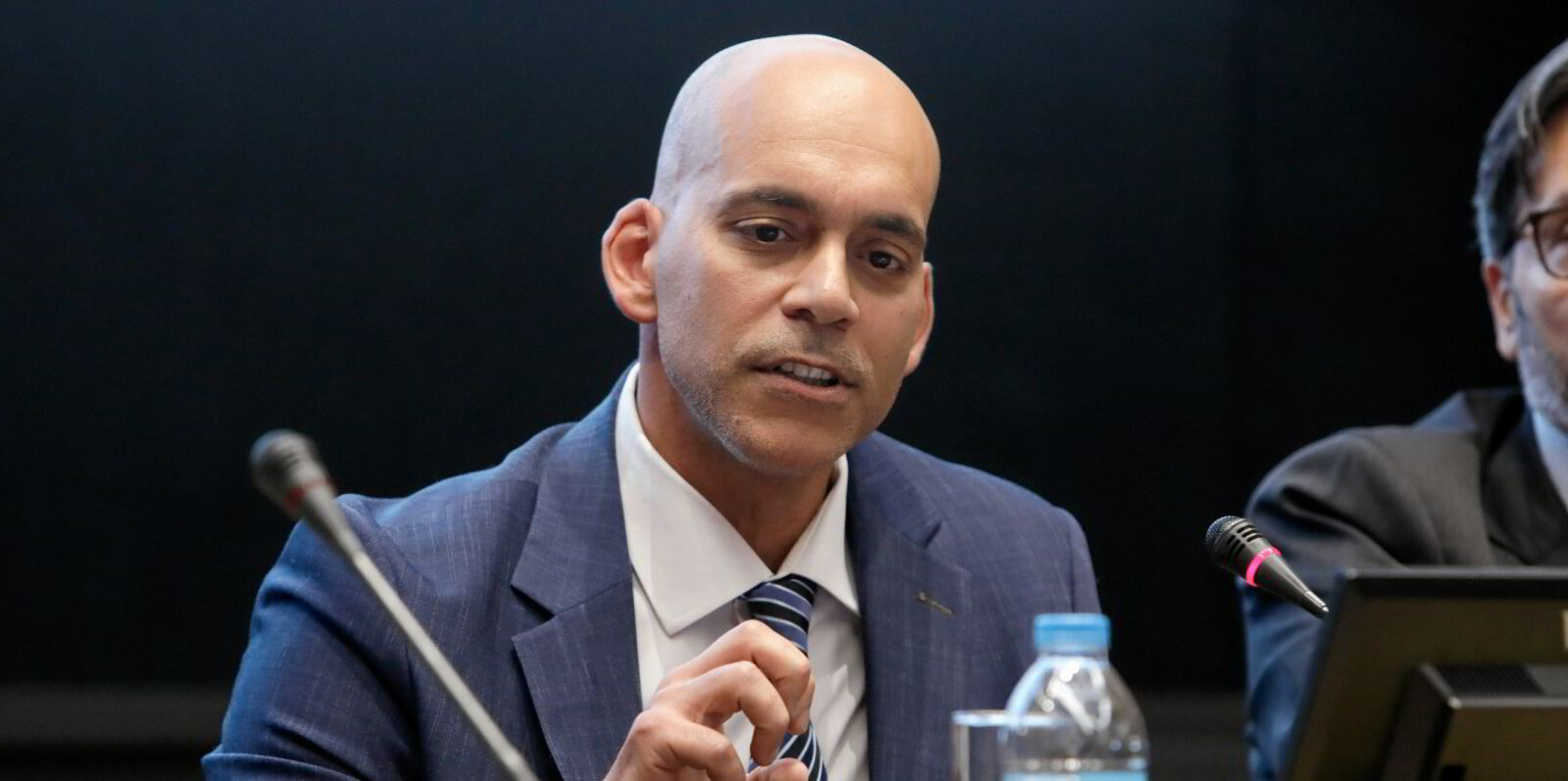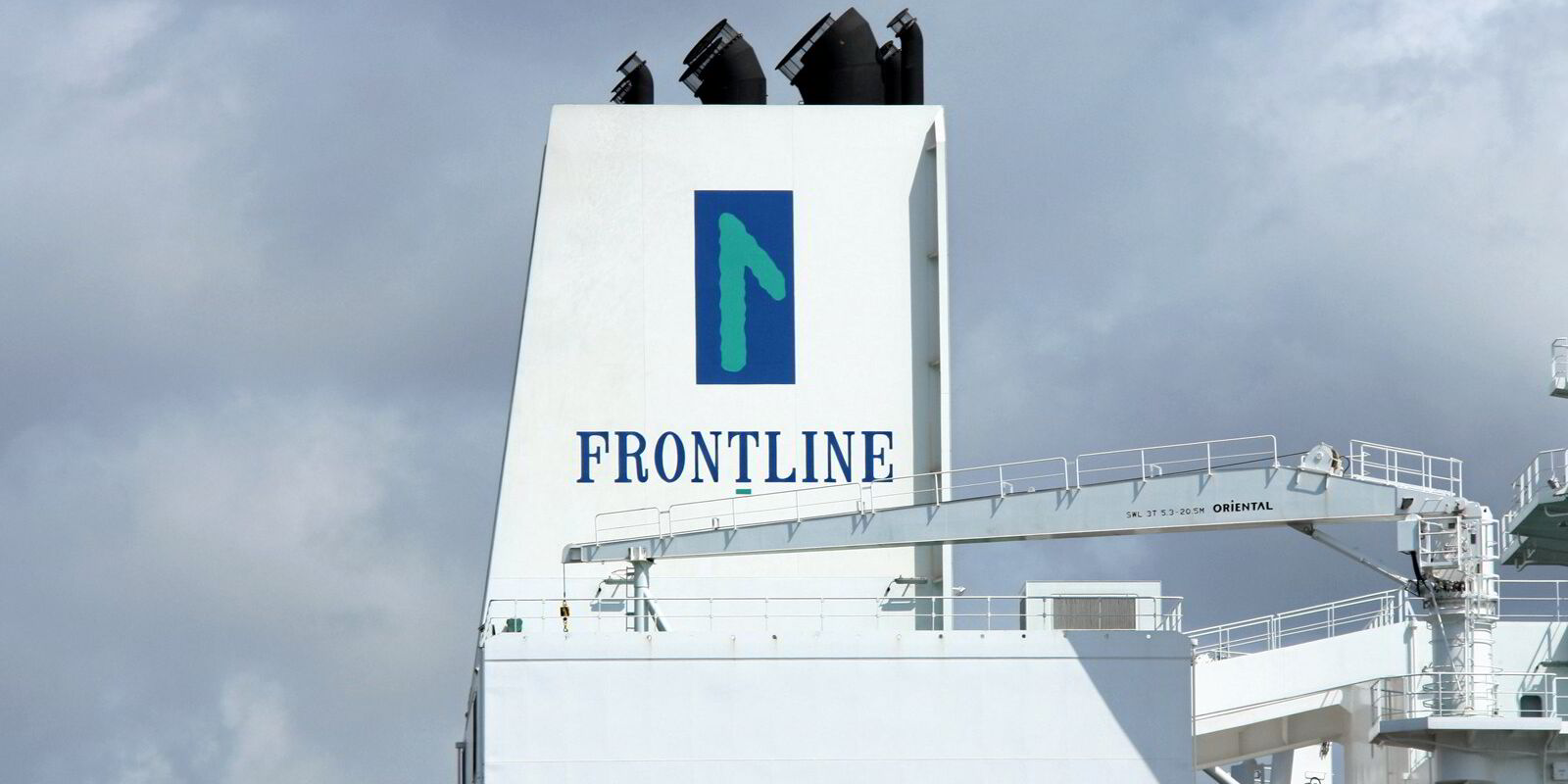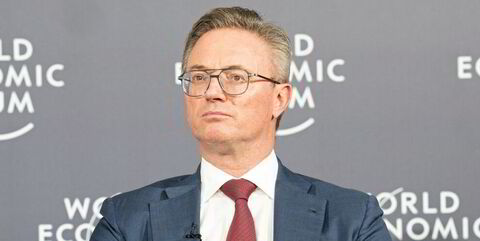After unwinding a brief July spike, VLCC spot rates are hovering just above their lowest level in months, as they slog through their summer slow season.
But if seasonal trends hold, they are headed for a bounce towards what is typically a winter peak.
Futures prices for very large tankers on the Middle East-to-Asia route point to a vertical trajectory from Friday’s spot rate of WorldScale 46.1, the equivalent of about $23,100 per day, until they reach WS 69.1 in mid-December.
But how deep will the summer slump reach, and how high will VLCC spot rates soar?
TradeWinds checked in with a variety of market stakeholders, including shipbroking houses and analysts, to share their views on the outlook for VLCC rates.
Most were sanguine on the summer decline — expecting a reversal in the weeks ahead — but views differed on the peak, with one shipbroking house pointing to rates as high as $80,000 per day but others taking a more cautious view.
Breakwave’s Kartsonas
Breakwave Advisors managing partner John Kartsonas, whose company runs an exchange-traded fund based on tanker futures, said his firm has been expecting a slowdown for some time, as the market returns to seasonality rather than the black swans that have pushed rates around in recent years.
He does not believe rates will slide much deeper than the lows of $15,000 to $17,000 per day seen in recent weeks.
“But we believe such low levels will persist till mid-late September,” he told TradeWinds.
“We expect rates to recover as we enter the fourth quarter, with China restocking and winter demand pushing the tanker sector across the board higher.”

Kartsonas said he expects “a few strong runups” in rates to return to building to the winter peak along patterns seen before the Covid-19 pandemic.
“This is not a fundamental view, but rather the regular process of the VLCC market where demand and supply tend to diverge during short periods, especially during the winter months.”
The VLCC route from the Middle East to China should beat last year’s high of $55,000 per day in the fourth quarter.
Kartsonas will be watching China’s crude oil import growth in the second half as a key factor in supporting VLCC rates.
“China has been quite weak in terms of crude oil imports so far this year, but we believe we are close to the bottom in terms of the multi-year economic downcycle for China,” he said.
Oil will be the first commodity that China will restock in a recovery.
But when asked about downside risks, Kartsonas again mentioned China.

“Once again, global economic growth is the most important factor that affects the oil markets, and more specifically China,” he said. “If the Chinese economy fails to show some upside momentum, then there is little for the VLCC market to look into in terms of demand.”
But Kartsonas still believes that the negative mood in the tanker sector has made current low prices a good entry point for investors to capitalise on the forthcoming seasonal winter uptick in VLCC rates.
MSI’s Smith
Shipping consultancy Maritime Strategies International estimates that VLCC spot earnings will rise from $40,000 to $45,000 per day in the fourth quarter, according to director Tim Smith.
That would be an increase in average VLCC earnings from an estimated $30,000 to $35,000 per day in the current quarter, and that comes after MSI reduced its forecast for the quarter from $55,000 to $33,700 per day in its July report.

“We have seen a notable slump in the market in Q3 [the third quarter] and other crude tanker spot markets have seen substantial deterioration in Q3,” he said.
“Opec+ output remains constrained, but production increases announced through the unwinding of voluntary cuts, mainly in Saudi Arabia, should provide some support towards the end of 2024,” Smith told TradeWinds.
MSI envisages the Chinese economy and oil demand as a key factor in the second half, and Smith said the early signs are “weak” so far.
Crude imports to China dropped in July, down 12% from June and 3% from the same month of last year, and it marked the lowest level since June 2022.
“Refining margins are weak and this is curbing appetite for crude. The wider Far East markets are now relatively stable, providing little upside for VLCC demand,” Smith said.
And VLCCs have not had the boost that smaller tankers gained from the Red Sea crisis, with most cargoes heading east anyway.
But Smith said fleet dynamics remain supportive on the supply side, with just one VLCC newbuilding to be delivered this year.
Jefferies’ Nokta
For Omar Nokta, who covers US-listed shipping companies for investment bank Jefferies, the trajectory of VLCCs from the summer lows depends on Middle East crude production.
As TradeWinds has reported, the analyst believes rates are bound to rise from their current slumber.

After all, he said in a note to clients that the supply-side factors in the VLCC sector are there to allow for a tight market.
But the spot market will “likely be hamstrung” by cuts from Opec+ — as the oil cartel and its Russia-led allies are known — that began to take a bite out of the demand side of the equation in the middle of last year, Nokta said.
He blamed the weak summer rates on seasonal factors that included a 2m barrel per day slump in Middle East exports amid flat production.
Nokta believes that a 1m bpd jump will take place in September and another 1m increase in November, which should bring 30 VLCC cargoes back into the market.
That could take rates to more than $50,000 per day, Nokta said.
“A breakout beyond that depends on a variety of factors, principally whether Opec+ explores further cuts or not,” the analyst wrote.
The Opec+ agreement at the beginning of August provided no help — as the group maintained voluntary cuts in place — but left its options open.
Nokta said voluntary cuts unwinding is expected in October, and he had been expecting that move to be deferred.
“The risk for VLCCs in 2025 is if further Opec+ cuts are needed,” he wrote. “The current voluntary cuts may remain in place throughout 2025, with risk of a further incremental cut down the line.”
Howe Robinson’s Mishra
For Isha Mishra, the head of tanker research at UK shipbroker Howe Robinson Partners, this summer’s seasonal downturn in the VLCC market is not unlike those of the past.
And like the more normal seasonality, the slump should correct as the market moves into autumn.

“The heightened summer domestic requirements have meant reduced exports over June-July and hence the corresponding tanker market performance,” she told TradeWinds.
The rebound should peak around November, she said, with non-eco VLCCs averaging about $60,000 per day.
But Mishra does not see an unwinding of production cuts by Opec+ as a major factor, even if that happens after September.
“I am not very confident given the current oil price curves,” she wrote in an emailed response to TradeWinds’ questions.
Instead, Mishra is looking to refinery maintenance in the Middle East, which peaked last year in the winter — as did tanker rates.
“I think the ongoing downside risk stems from continued pressure on oil demand from China, where we have seen import demand soften along with continued diversification of its import basket,” she said.
Clarksons’ Gordon
Stephen Gordon, managing director of the research division at shipbroking giant Clarksons, is optimistic.
“We do generally still see a strong winter ahead and generally good fundamentals for next year,” he told TradeWinds.

He said that on the demand side, Clarksons Research sees prospects tied to Opec’s upcoming decision on production cuts.
“And we are also watching Chinese demand, trends such as Atlantic to Pacific volumes and of course the world economy and impacts on global oil demand,” he said.
Gordon said the supply-side picture looks “very constrained” even though the orderbook has risen to 7% of the on-the-water fleet, compared to an all-time low of 1.3% in July of 2023.
In addition to just one VLCC newbuilding delivering for the rest of the year, there are just five coming down the pike in 2025.
Fearnleys’ Staubo
Jonathan Staubo, a tanker analyst for Norwegian shipbroking giant Fearnleys, said that in normal conditions, a rebound in volumes should begin in September as domestic demand in the Middle East and the US Gulf Coast pulls back.
“This year should be no different,” he told TradeWinds.
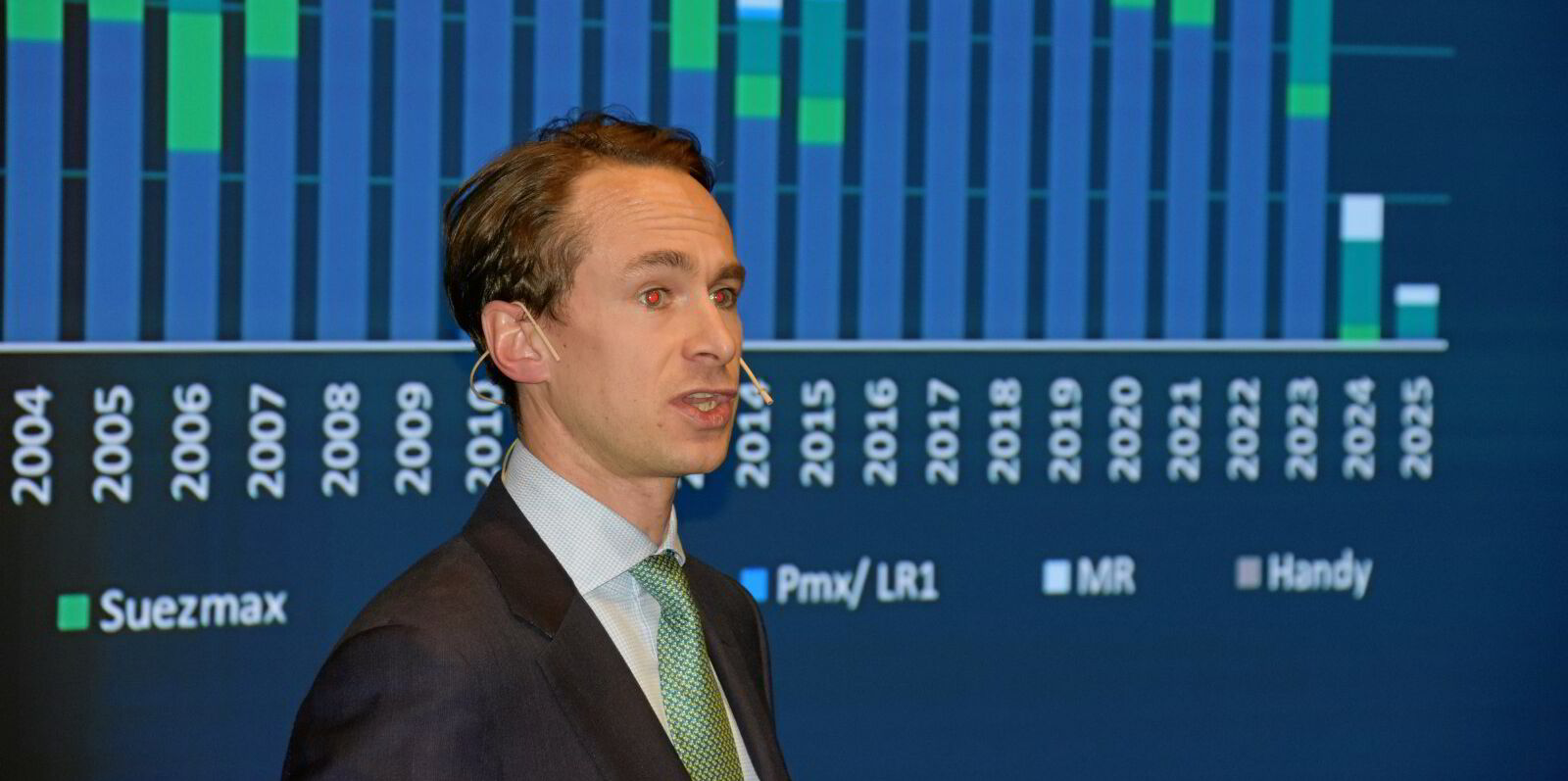
“That said, a negative market sentiment has also contributed to the downside recently, as rates are arguably lower now than warranted by supply/demand fundamentals. As seen in this market time and again, this may turn quickly.”
Staubo offered the highest rate forecast of the experts polled by TradeWinds.
“We expect rates to peak in December at around $80,000 per day — with some spikes above that also possible in a bull-case scenario — provided that Red Sea evasion persists and oil demand and supply grow in line with key energy agency forecasts,” he said.
But Staubo said some demand-side risks may bring the market somewhat lower than that figure.
He noted that, outside typical seasonal factors, there has been a recent lack of Asian crude oil buying interest from the Atlantic basin amid a closure of East-West arbitrage in the market.
“We need to see that appetite and relative crude oil pricing improve before a sharper rate rally can commence,” Staubo said.
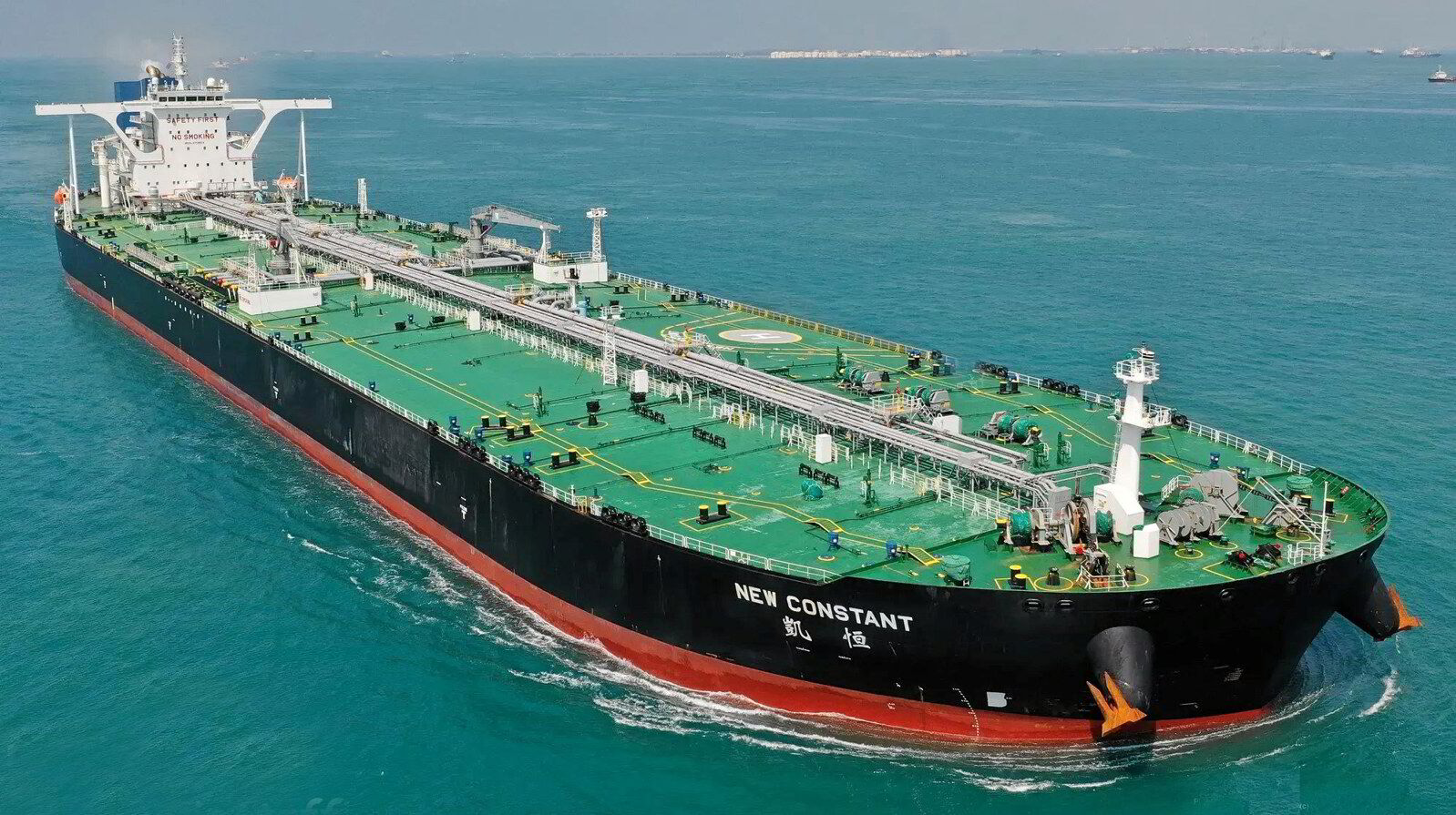
China will need to recover its imports by 500,000 bpd to meet its economic targets.
“Over the last year we have highlighted two main downside risks for the tanker market, a macroeconomic setback from global soaring debt and a reversal of geopolitically driven trade diversion,” Staubo said.
The macroeconomic risk has come in recent days, as jitters over the US economy dominated headlines.
“If continued, this may have a dampening effect on the expected rate recovery going forward, while the latter appears to be a less imminent threat,” Staubo said.
Read more
- Frontline tanker ships out first Utapate crude as Nigeria aims to boost exports
- Gianluigi Aponte’s MSC shopping for newbuildings at Chinese shipyard
- VLCC scrubber retrofits pay off despite narrowing of bunker price gap, Gibson says
- Elite Tankship strikes $18.9m newbuild tanker charter with Glencore’s ST Shipping
- VLCCs expected to see rate uptick, veteran shipping analyst says


